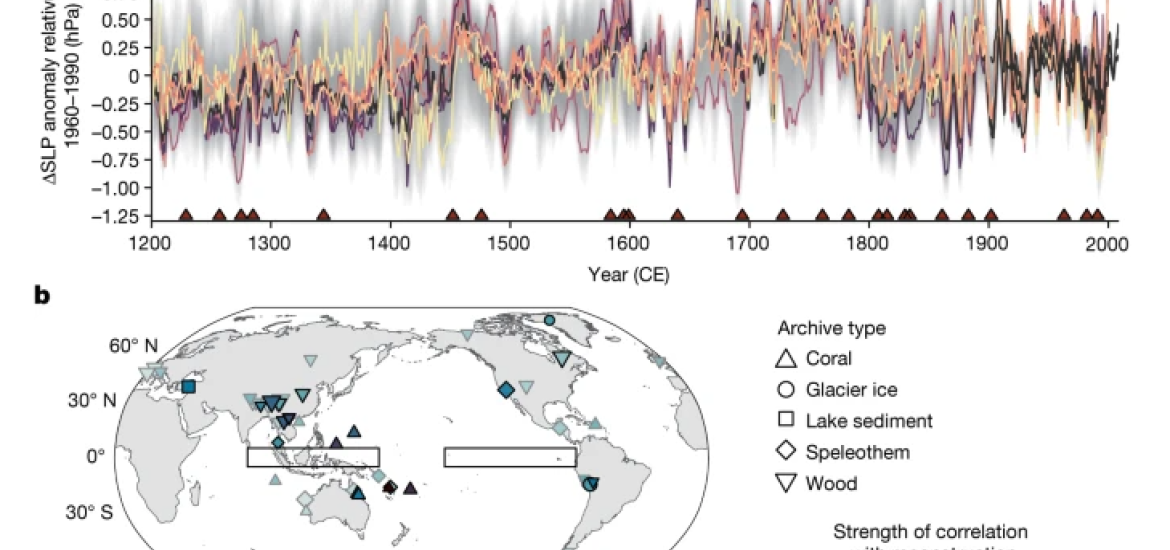- Home
- All News Overview
- Forced Changes In The Pacific Walker Circulation Over The Past Millennium

Tuesday, 12 September, 2023
A new paper has been published by Falster G et al. in Nature on "Forced changes in the Pacific Walker circulation over the past millennium".
The reconstruction of the proxy records uses the Iso2k database, which is a contribution to Phases 3 and 4 of the PAGES 2k Network.
The El Niño-Southern Oscillation (ENSO) is a periodic (2-7 year) shift in the water temperature and winds of the equatorial Pacific that represents one of the most important short-term influences on the Earth’s climate system. An outstanding question however is to what degree human impact on the climate system has changed ENSO over the industrial era, particularly since most climate models suggest that ENSO should weaken in response to global warming.
In a new study, Falster et al. tackle this question by reconstructing an 800 year record of the atmospheric part of the ENSO system (the Pacific Walker Circulation) that reveals both pre-industrial and post-industrial variability. The authors were able to reconstruct this record through the analysis of annually-resolved data from ice cores, lake sediments, corals and caves. They found somewhat unexpectedly that the Pacific Walker Circulation appears to have changed its periodicity but not so much its strength as global warming has intensified in recent years. A recent (1992-2011) strengthening was found not to be unusual when compared to natural variability across the entire period of the record. The length of the record also meant that they were able to reveal the previously ambiguous impact of tropical volcanic eruptions, showing that a consistent weakening of the Pacific Walker Circulation generally occurred after this type of volcanic event.
> Access article https://pastglobalchanges.org/publications/137359